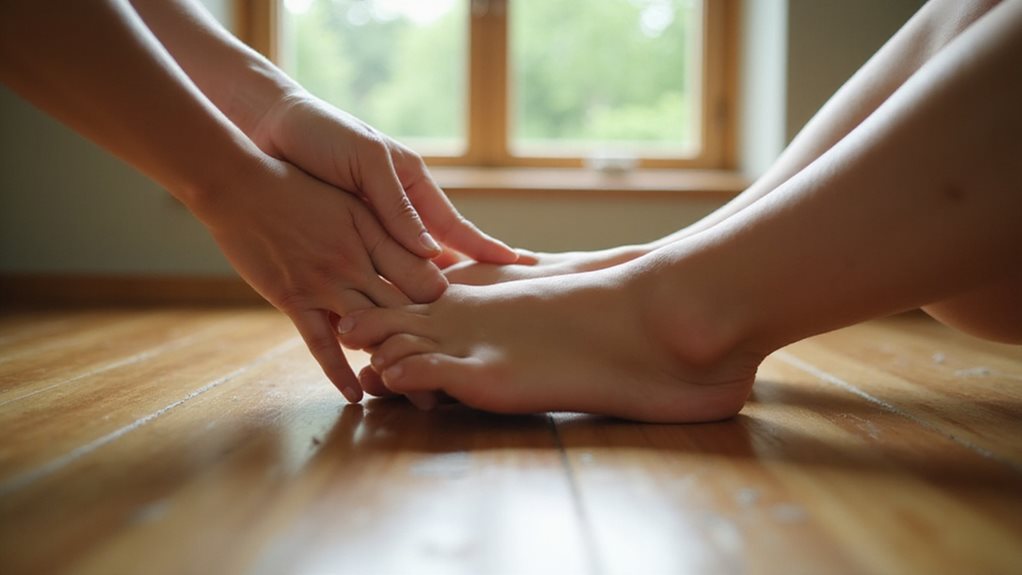Reflexology, an ancient healing art, offers a powerful path to stress relief by targeting specific zones on the feet and hands. This practice, rooted in diverse cultural traditions, taps into the body’s natural relaxation responses. It soothes the mind and eases tension through precise pressure techniques. How does this gentle therapy transform daily stress into profound calm? Uncover its remarkable impact on well-being through further exploration.
Key Takeaways
- Reflexology reduces stress by lowering cortisol levels and activating the parasympathetic “rest-and-digest” mode.
- It stimulates endorphin release, promoting relaxation and emotional balance.
- Enhances circulation, delivering oxygen and nutrients to ease chronic anxiety.
- Activates sensory nerves, calming the nervous system for mental clarity.
- Offers a non-pharmacological approach to relieve stress and build resilience.
Understanding Reflexology and Its Core Principles
Curiosity often draws people to reflexology, a therapeutic practice rooted in the belief that specific areas of the feet, hands, and ears correspond to different organs and systems within the body. This ancient art, blending traditions from Chinese, Ayurvedic, and Hellenistic medicine, maps the body into reflex zones, with energy channels connecting distant regions. By applying precise pressure, practitioners aim to restore balance and promote well-being.
For those seeking a sense of harmony, reflexology for stress relief offers a welcoming path. Developed in the early 20th century by Fitzgerald, it focuses on whole-body energy flow, using manual techniques to address imbalances. Through its calming influence on the nervous system, reflexology helps reduce stress levels effectively. Join a community embracing this gentle, holistic approach to nurture inner peace and reconnect with the body’s natural rhythms.
How Reflexology Combats Stress Through Body Mechanisms

How1. How does reflexology serve as a powerful ally against stress? It works by engaging the body’s intricate mechanisms to foster calm and balance. Through targeted pressure on reflex points, sensory nerves transmit signals to the central nervous system, calming it and modulating mood-boosting neurotransmitters like serotonin. This process activates the parasympathetic “rest-and-digest” mode, lowering cortisol levels and easing tension.
2. Moreover, reflexology stimulates endorphin release, acting as natural mood elevators, while balancing hormones through endocrine system points. Improved circulation supports organ recovery by delivering oxygen and nutrients, and sessions promote relaxation to regulate sleep and stress responses. By stimulating the nervous system, reflexology triggers a relaxation response that helps reduce overall stress levels.
3. For those seeking relief, reflexology offers a nurturing path to reconnect with inner peace and restore equilibrium within the body’s systems.
Physical Advantages of Reflexology for Relaxation
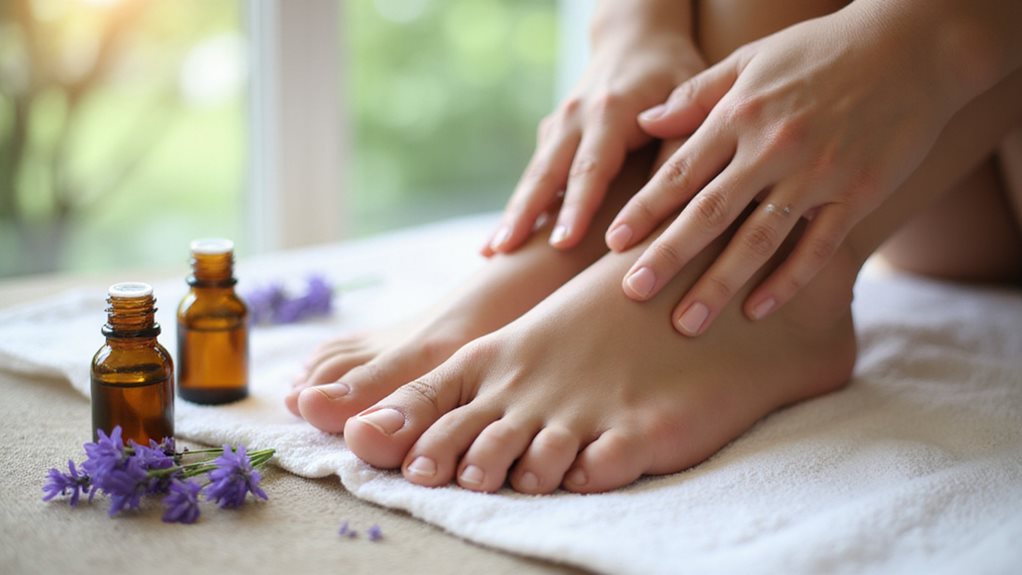
Reflexology offers notable physical benefits for relaxation by easing muscle tension through targeted pressure on specific reflex points, which helps release built-up stress in the body. It also aids in normalizing heart rate by stimulating areas linked to cardiovascular function, fostering a calmer physiological state. Furthermore, it improves breathing patterns by activating reflex zones tied to respiratory health, encouraging deeper, more rhythmic breaths for general tranquility. Additionally, reflexology increases blood flow to various parts of the body, helping to decrease stress and anxiety.
Easing Muscle Tension
Delving into the physical benefits of reflexology, one finds a powerful method for easing muscle tension, a common manifestation of stress. By stimulating specific reflex points, this practice activates the rest-and-digest nervous system, lowering cortisol levels and reducing muscle rigidity. People often feel immediate relief as calming sensations from targeted pressure counteract stress signals, allowing muscles to unwind.
Moreover, reflexology eases stress-induced strain, alleviating discomfort from chronic anxiety or pressure. It fosters a mind-body connection, breaking cycles of tension while enhancing circulation to deliver essential nutrients to tissues. This supports muscle recovery and reduces soreness, offering a sense of holistic comfort. For those seeking relief, reflexology provides a nurturing path to physical ease and shared wellness. Systematic reviews also highlight how reflexology can significantly contribute to stress reduction through targeted foot pressure.
Normalizing Heart Rate
Countless people grappling with stress find their heart rates increased, a physical marker of tension that reflexology can effectively address. This gentle therapy works by stimulating specific foot zones, like the heart reflex points, to balance the autonomic nervous system, promoting a calming parasympathetic response. Studies reveal an average heart rate reduction of 4.76 BPM across diverse groups, with immediate effects seen within 15 minutes. For those with hypertension, reflexology offers further relief, lowering systolic and diastolic blood pressure alongside heart rate normalization. Additionally, this therapy enhances overall relaxation by reducing stress hormones, contributing to a calmer physical state.
Enhancing Breathing Patterns
While stress often disrupts natural breathing rhythms, reflexology offers a targeted approach to restore balance through its focus on specific foot zones linked to respiratory function. By stimulating lung reflex points, people can experience deeper inhalation and relaxed diaphragm engagement, fostering a sense of calm and connection to their body.
Key benefits of reflexology for breathing include:
- Enhanced oxygen intake through improved lung expansion.
- Decongestion of airways by targeting sinus and bronchial points.
- Reduced respiratory rate with controlled, mindful breathing.
- Alleviation of chest tension for better capacity.
This practice also mitigates anxiety-driven shallow breathing by activating the parasympathetic system, supporting everyone in finding a shared space of ease and respiratory harmony through reflexology’s nurturing touch. Additionally, reflexology can support recovery from respiratory conditions by enhancing overall lung function (enhancing lung function).
Emotional Wellness Boosted by Reflexology Practices
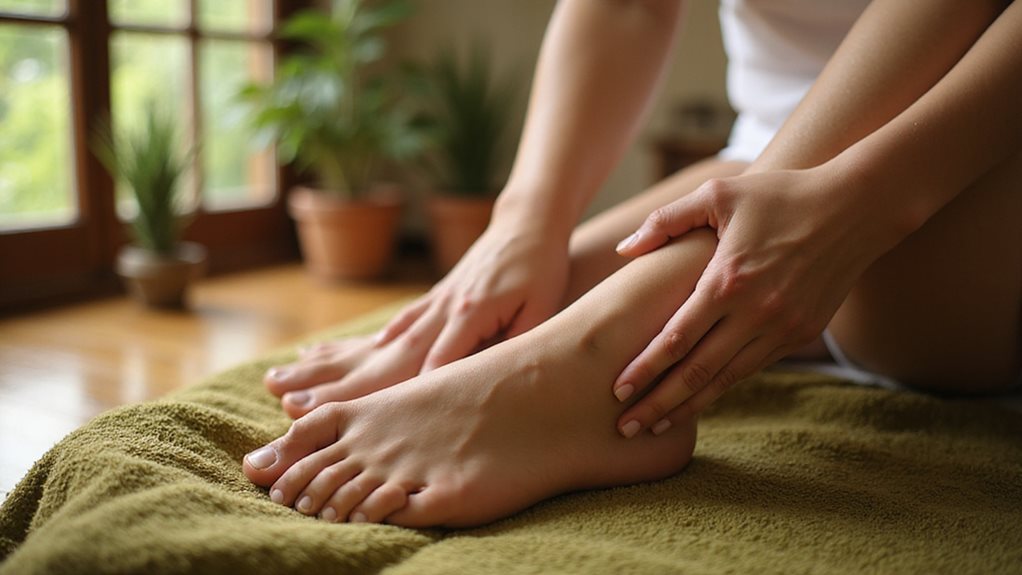
Reflexology offers profound support for psychological wellness by enhancing mood stability through the release of feel-good neurotransmitters like serotonin and dopamine. It also reduces psychological strain by calming the body’s stress response and clearing unprocessed feelings, fostering a sense of inner peace. Furthermore, it enhances mental clarity by improving brain circulation and quieting mental noise, allowing people to feel more focused and grounded. Notably, reflexology stimulates the release of endorphins, which help the body build resilience to stress.
Enhancing Mood Stability
People seeking mental wellness often find comfort in reflexology, a practice that profoundly improves mood stability through targeted pressure on specific reflex points. By calming the nervous system and regulating neurotransmitters, it fosters mental balance for those yearning to feel grounded and connected.
Reflexology supports mood through key mechanisms:
- Boosts Serotonin Release: Boosts natural mood enhancers for mental stability.
- Triggers Dopamine Production: Promotes feelings of happiness and reward.
- Improves Circulation: Delivers oxygen-rich blood to the brain for neurological health.
- Balances Energy Flow: Restores equilibrium to disrupted pathways, easing mood swings.
This holistic approach nurtures a sense of inner peace, inviting people into a supportive community of wellness seekers, where mental clarity and stability become attainable through consistent practice. Additionally, reflexology activates the parasympathetic nervous system to reduce stress hormones, aiding in emotional regulation and overall well-being.
Reducing Emotional Strain
How can one find comfort amidst the weight of psychological strain? Reflexology offers a gentle, supportive path for those seeking psychological wellness within a caring community. By activating the parasympathetic nervous system, it shifts the body from stress to relaxation, lowering cortisol levels for psychological stability. It mitigates triggers by promoting lymphatic drainage and balancing energy flow, releasing stored trauma through physical responses like tears.
Moreover, reflexology stimulates endorphin release, enhances serotonin, and regulates neurotransmitters, fostering resilience against psychological overwhelm. It creates a safe space for processing grief and trauma, complementing therapy with a non-verbal outlet. For anyone yearning to belong, reflexology provides a somatic anchor, grounding emotions and nurturing self-awareness in a shared path toward healing. Regular sessions can further enhance these benefits by promoting emotional balance over time, helping individuals maintain a positive outlook.
Boosting Mental Clarity
Maneuvering the haze of mental fog can be a formidable challenge, yet reflexology offers a promising avenue for enhancing mental clarity. This practice, rooted in targeted pressure on reflex points, fosters improved circulation and oxygen flow to the brain, supporting sharper cognitive function and reducing mental overwhelm. It also calms the nervous system, quieting incessant mental chatter and promoting mental balance. A meta-analysis of trials has shown that reflexology significantly improves depression and anxiety, offering a supportive therapy for mental health challenges.
Key benefits of reflexology for mental clarity include:
- Enhanced focus through reduced stress and mental fatigue.
- Improved problem-solving with better nutrient delivery to the brain.
- Decreased anxiety via parasympathetic nervous system activation.
- Boosted energy from optimized metabolic flow.
For those seeking a sense of inner peace and belonging, reflexology provides a nurturing path to clearer, calmer thinking.
Enhancing Circulation and Detox With Reflexology
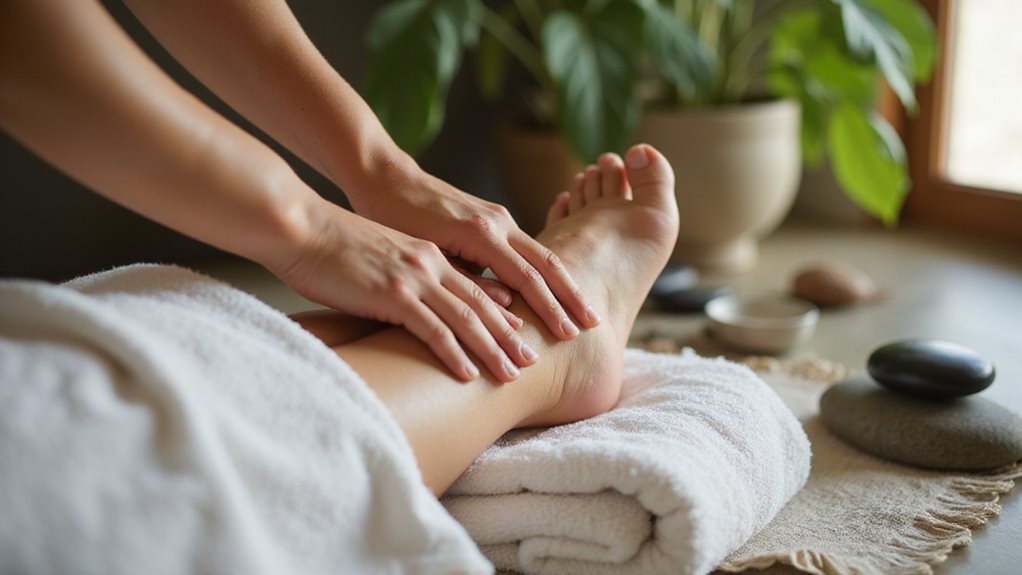
Reflexology offers a powerful approach to enhancing circulation and supporting detoxification within the body. By applying targeted pressure to specific reflex points, this practice stimulates vascular dilation, allowing for better oxygen delivery to tissues. This increased oxygenation, along with improved nutrient distribution, nurtures cellular repair and regeneration, fostering a sense of vitality that connects people to their body’s natural healing rhythm.
Moreover, optimized blood flow accelerates healing processes, aiding recovery from injuries while facilitating toxin removal through the bloodstream. As circulation improves, the body efficiently clears waste, leaving one feeling refreshed and balanced. Reflexology also strengthens the immune system by stimulating the lymphatic system, which helps remove toxins effectively. Reflexology, in this way, becomes a shared path toward wellness, inviting everyone to experience the rejuvenating harmony of a detoxified, well-nourished system.
Reflexology in Clinical Settings for Stress Management
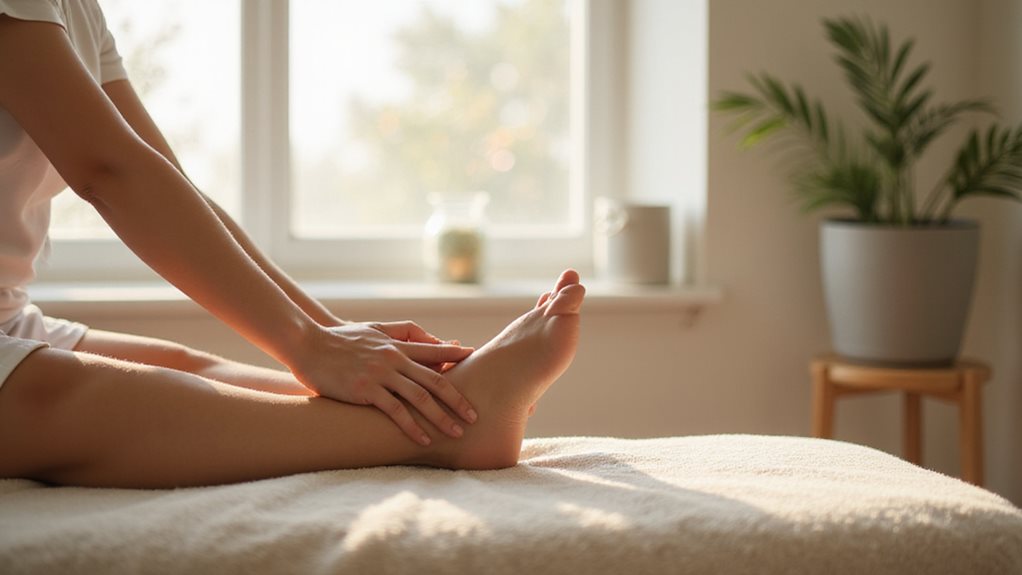
In clinical environments, the application of reflexology emerges as a valuable tool for stress management among both healthcare personnel and patients. This gentle, non-invasive practice offers a sense of calm and connection, fostering psychological well-being in high-pressure settings. Research highlights its effectiveness in reducing work stress and anxiety, especially among nursing managers, while also aiding patients with stress-induced pain. By targeting specific reflex points like the Solar Plexus Point on the foot, reflexology can stimulate energy flow to promote calmness and relieve tension in these demanding environments.
Key benefits of reflexology in clinical settings include:
- Psychological Support: Improves mental health for adults with anxiety or depression.
- Non-Pharmacological Approach: Offers a safe alternative for stress relief.
- Complementary Care: Improves outcomes when paired with conventional therapies.
- Condition-Specific Relief: Eases anxiety in cardiac surgery patients.
This inclusive practice welcomes all seeking comfort in clinical care.
Real-Life Impacts of Reflexology on Daily Tension
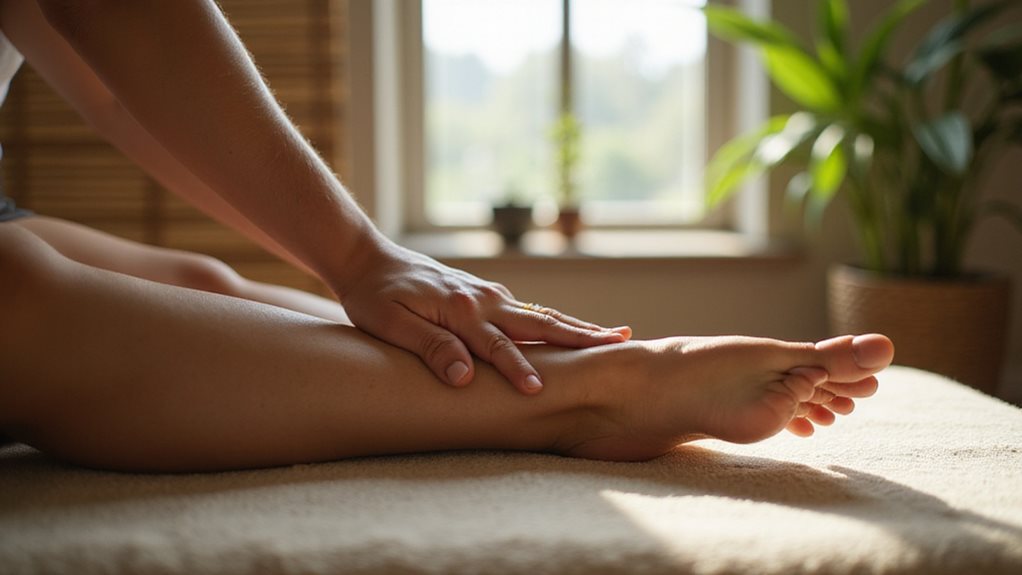
How does one navigate the relentless pressures of daily life without succumbing to tension? Reflexology offers a grounding path for many, easing the weight of everyday stress. By targeting specific pressure points, it lowers cortisol levels and activates relaxation responses, helping people release chronic muscle tightness from long hours of sitting or standing. This practice also nurtures mental well-being, reducing anxiety and fostering resilience during tough times. For those battling chronic pain like migraines or arthritis, reflexology provides tangible relief, while enhancing energy and sleep quality. Research suggests that consistent sessions can amplify these benefits over time, leading to sustained stress reduction. It’s a shared path toward balance—enhancing mental clarity and strengthening the body’s defenses against daily stressors. Together, a community finds comfort in this gentle, drug-free approach to reclaiming calm.
Exploring Different Reflexology Techniques for Calmness
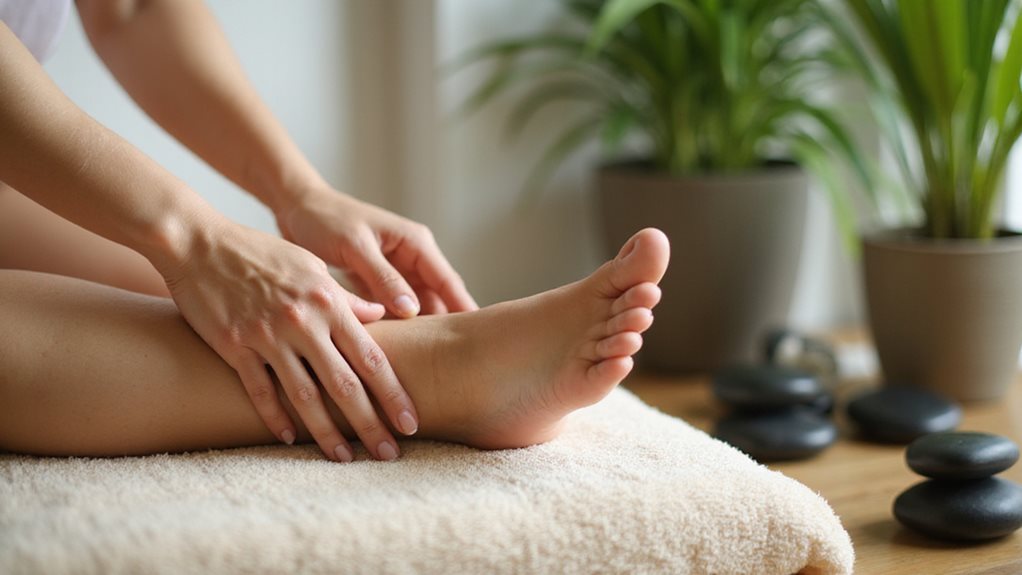
Many people have experienced the soothing effects of reflexology in managing daily stress, finding comfort in its ability to restore balance. This practice offers diverse techniques tailored to foster calmness, connecting people to a shared pursuit of peace. From foot reflexology’s precise targeting of stress zones like the adrenal glands to hand and ear methods for portable relief, options abound.
Consider these accessible techniques to promote relaxation:
- Zone Identification: Mapping foot areas linked to stress organs.
- Rotational Massage: Circular motions to improve circulation.
- Webbling Technique: Pinching hand webbing for cortisol reduction.
- Aromatherapy Integration: Using calming scents like lavender.
These approaches, whether tool-based or holistic, invite everyone into a nurturing space of stress relief and renewed harmony. Acupressure, a related practice, also targets specific points to balance natural energy for effective stress relief.
Frequently Asked Questions
Is Reflexology Safe for Pregnant Women?
Regarding reflexology’s safety for pregnant women, it is generally considered safe with certified practitioners. They tailor treatments, avoid excessive pressure, and assess personal needs, ensuring a supportive experience for expectant mothers.
Can Reflexology Help With Insomnia Issues?
Can reflexology help with insomnia issues? Consider Jane, who struggled nightly to sleep. Reflexology, by calming the nervous system and targeting specific foot reflexes, helped her drift off faster, fostering restful nights and community connection.
Are There Risks With Reflexology Treatments?
Risks with reflexology treatments do exist. They include potential complications for pregnant people, circulation issues like blood clots, foot health concerns, and side effects such as discomfort or bruising. Always consult professionals for safety.
How Often Should I Get Reflexology?
Determining reflexology frequency depends on specific needs. For general wellness, monthly sessions suffice. Weekly or bi-weekly treatments help manage chronic stress or pain. Adjustments based on client’s response provide a supportive, customized experience.
Does Reflexology Require Special Training?
Reflexology does require special training to guarantee safe, effective practice. Programs typically range from 110 to 300 hours, including hands-on techniques and supervised practice, fostering skills that connect practitioners with a supportive professional community.
Conclusion
In a world of relentless pace, reflexology emerges as a serene sanctuary, juxtaposing modern chaos with ancient healing. This precise art, rooted in timeless wisdom, gently nudges the body toward balance, easing stress through targeted touch. While daily tensions grip the mind, reflexology offers quiet release, fostering psychological and physical renewal. Its empathetic approach, validated in clinical fields, stands as a potent reminder: true calm often lies in the simplest, most intentional connections.
